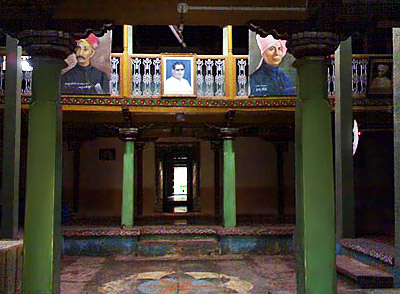A multitude of towns and cities have developed in each and every state of Indian Territory. In the state of Karnataka also, there is no paucity of towns as well. Kundgol is quite significant and naturally catches attention of many experts. In fact Kundgol is the name of a panchayat town which is rightly been located in the district of Dharwad of the same state of India.
Strategically also this Kundgol town has gained significance. It is situated approximately at 15.25° N and 75.25° E. Also it elevates its height up to 615 metres or 2017 feet above the mean sea level.
In order to identify a town it is very much indispensable for a person to gather more and more information about the demography of the particular town. Over these years also numerous surveys and research works have been conducted so that characteristic feature about the Kundgol town`s demography can rightly be deciphered. Amongst all these surveys, the Census report of India that has been published the year 2001 is noteworthy.
Data like population status, literacy rate etc can be deduced from the census report if one thoroughly consults this report. Thus according this report the total population of Kundgol has been enumerated to be 16,837. Out of it, condition of males, females and also children who are residing in this Kundgol can be identified. In other words the population of males in Kundgol constitutes of 51 percent. Also female populace is less than that of males. Thus it constitutes of 46 percent only. In Kundgol town, children below six years of age constitutes of 12 percent of the total population.
 There are several demographers who bear the opinion that literacy rate is the ideal yardstick for measuring the growth of any town. Regarding this Kundgol town it can be highlighted that the average literacy rate is higher than that of the whole nation. It ultimately establishes the fact the Kundgol town is quite a developed town. 64 percent is the average literacy rate of Kundgol city. In India the average literacy rate has been counted to be 59.5 percent. Moreover if one wishes one can even get familiar with the literacy status of females and males and that too on individual basis. To be specific the male literacy rate constitutes of 73 percent. Also 54 percent is the rate of female literacy in Kundgol.
There are several demographers who bear the opinion that literacy rate is the ideal yardstick for measuring the growth of any town. Regarding this Kundgol town it can be highlighted that the average literacy rate is higher than that of the whole nation. It ultimately establishes the fact the Kundgol town is quite a developed town. 64 percent is the average literacy rate of Kundgol city. In India the average literacy rate has been counted to be 59.5 percent. Moreover if one wishes one can even get familiar with the literacy status of females and males and that too on individual basis. To be specific the male literacy rate constitutes of 73 percent. Also 54 percent is the rate of female literacy in Kundgol.
Historical significance of this Kundgol town is no less importance. As has been mentioned by the sources , Kundgol became `non-contiguous` part of Jamkhandi , a `princely state` . The time period was preceding years of 1948.
Another source claims that in this Kundgol town , a famous musical maestro of Hindusthani music , namely Rambhau Kundgolkar was born. He was renowned as Pandit Sawai Gandharva.
To facilitate easy transportation, the Kundgol is well connected by rails and airports. Hubli Airport lies in its vicinity. Two important railway stations also are found here on the Hubli- Haveri rail route, Kundgol Railway Station is situated. In the neighborhood, main railhead is Hubli Junction Railway Station.



















